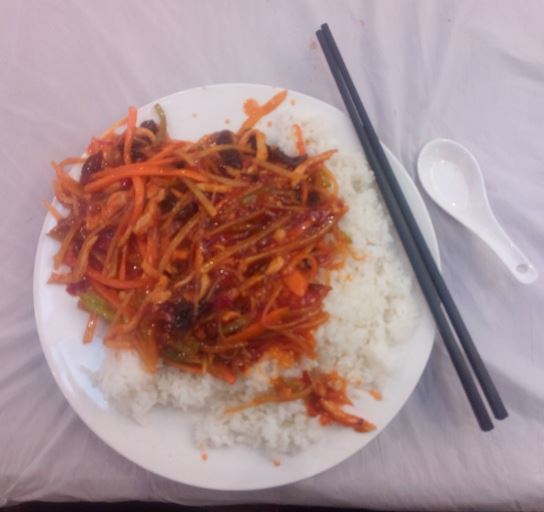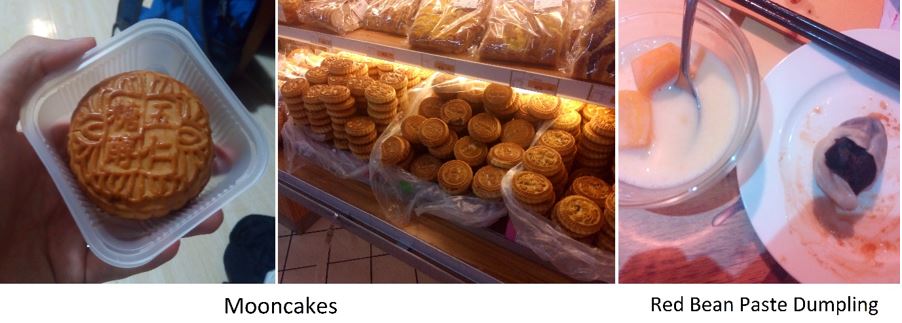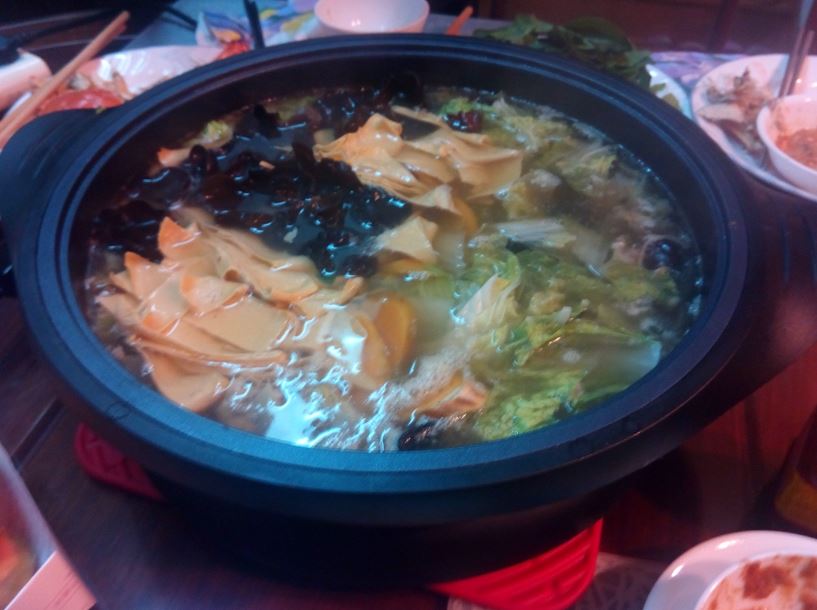The Life of a Wài Guó Rén (Part 2)
When it comes to Chinese food, you may think of stuff they sell at the takeaway in Kyle: chicken chow mein, egg-fried rice, prawn crackers and maybe a few fortune cookies.
Not even close. One of my biggest surprises so far has been discovering how different food is here from the Chinese back home. While talking with a Chinese student last week about sweet and sour pork and fortune cookies, he said he’d never come across those things in his life. Chinese cuisine is a brave new world for the Western palette – flavours and textures often go beyond description, and the diversity is unfathomable. A fellow European I met in Tianjin once told me, “the beautiful thing about Chinese cuisine is that, even after living here for thirty years, you can still go out for lunch and find something at the table which you’ve never tried before.”
Chinese culture is nothing without food – even the traditional way of asking “how are you?” is “nǐ chī le ma?” (literally “have you eaten yet?”). In a country so large with a culture so ancient, exploring Chinese food is an endless journey of discovery, which I have barely begun.
Here are some Chinese dishes I’ve tried here which you’ve probably not come across before:
Fish-flavoured Pork (鱼香肉丝 – yú xiāng ròu sī)
Strangely enough, this dish has nothing to do with fish. Instead, it consists of shredded pork mixed with chilli sauce, green peppers, ginger, soy sauce, sugar and garlic. It’s a popular choice in our canteen, and the flavour can be described as sweet, salty, sour, spicy and fresh at the same time. At around £1 a plate you can’t complain.
Red Bean Paste and Mooncakes (红豆沙; 月饼 – hóng dòu shā; yuè bǐng)
Chinese cuisine isn’t very big on deserts, however the ones I’ve tried often contain red bean paste, a sweet filling made by boiling and mashing red beans. I don’t think Western taste buds can accurately describe it. It’s often used in pastries, dumplings, steamed buns and mooncakes (round, baked pastries with a sweet filling). During the Mid-Autumn Festival, celebrated near the end of September, Chinese people will consume a large number of mooncakes, as their shape resembles that of the full moon. It is also custom to give mooncakes to all your friends, family and colleagues, so the Chinese often become sick of receiving so many by the Festival’s end!
Hot Pot (火锅)
In China, nothing brings family and friends together like a decent hot pot. A huge pot of soup stock is placed on the dining table and kept at a simmering heat. Raw ingredients, such as sliced meat, vegetables, mushrooms, fish and tofu, are then added to the pot and left for a few minutes to cook at the table. After this, everyone spends the rest of the evening fishing with their chopsticks to see what they can find, making merry and enjoying each other’s company.
Hotpot is a fun experience for the adventurous eater, however it’s not much of a budget option for skint gap-year students, as we quickly discovered on our first week. Filled with unwitting curiosity, we went to a hotpot restaurant with scarce Mandarin and ended up with twenty more dishes than we ordered. For more affordable, everyday meals, noodles and rice are the way to go. One place many of us frequently revisit is a Shanxi noodle restaurant down the road, affectionately known by the scholars as “the noodle gaff”. Here you can buy a noodle variety known as dao xiao mian, thick, stodgy and filling noodles made by slicing pieces of dough quickly into boiling water. Even after countless revisits, the taste and value can’t be beaten.
En outre, pendant mon voyage j’ai goûté beaucoup de nourriture vraiment étrange, par exemple:
- Du poulpe
- Une brochette de crabe
- Du sang de canard
- De l’intestin de canard
- Du cerveau de canard
- La tête d’un poulet
- Des œufs bleus
- Du jus de maïs chaud
Pensez-vous que vous pourriez essayer toute cette nourriture?
À tout à l’heure!
麦亚伦
Arran


